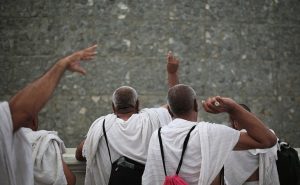DEEPER MEANING OF DHIKR DURING JAMARAT STONING AND THROUGHOUT THE HAJJ

Dhikr remembrance of Allah is not only a verbal practice during Hajj; it is the very essence that animates every rite. The stoning of the Jamarat in Mina illustrates this most vividly.
Renewal of the Covenant
Each pebble represents a reaffirmation of the pilgrim’s lifelong pledge to reject sin and the whispers of Shaytan. By uttering Allāhu Akbar with each throw, the pilgrim proclaims that God’s greatness overrules all earthly desires and fears.
Victory Over the Ego
The physical motion of throwing stones becomes a symbolic casting away of arrogance, anger, and pride. Dhikr here is an inner weapon reminding the heart that true strength is spiritual, not physical.
Continuity of Prophetic Legacy
This act revives the story of Prophet Ibrahim’s steadfastness. Through remembrance, pilgrims join a chain of believers stretching back to the father of monotheism, reinforcing unity across time and generations.
Mindful Presence Throughout Hajj
Beyond Mina, dhikr sustains the pilgrim in every moment:
-
Tawaf: The rhythmic recitation while circling the Kaʿbah centers the soul on Allah’s oneness.
-
Arafah: Continuous supplication turns hours of waiting into a sacred dialogue with the Divine.
-
Safa and Marwah: Repeating praises recalls Hajar’s unwavering trust and keeps hope alive even in hardship.
Carrying Hajj Home
When the journey ends, dhikr remains a lifelong practice. The pilgrim returns with a heart trained to remember Allah in ordinary moments during work, family life, and solitude so that every breath can become worship.
In essence, dhikr transforms Hajj from a sequence of movements into a living, transformative encounter with the Creator, ensuring that the pilgrimage leaves a permanent imprint of faith and mindfulness.

